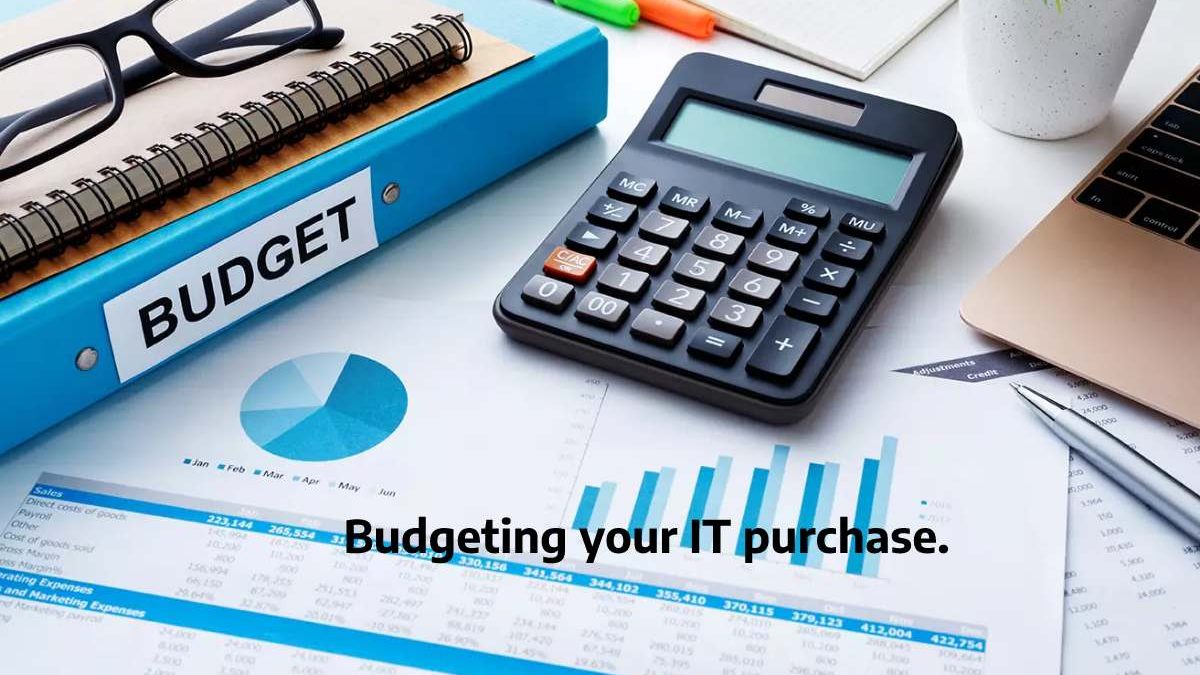Table of Contents
Introduction
Budgeting your IT purchase: A large purchase of information technology (IT) is similar to buying a house or car. What you want to buy doesn’t always match what you’re able to afford.
That’s why setting a realistic budget is one of the first steps to take when thinking about buying new technology.
Companies often misspell costs and forget about large budget items, including implementation, maintenance, upgrades, and unexpected errors.
Determine a cost range
Get yourself a rough idea of the rate of the technology under consideration. You can determine a cost range by talking with other contractors, trade associations, your advisory board, and professionals, such as your accountant.
Hire an external expert to advise you on your technology purchase. They should give you an idea of the cost of the various systems depending on your industry and the number of employees.
Prioritize your needs for Budgeting your IT purchase.
Often your budget doesn’t allow you to meet all your IT needs fully. Everyone wants the best, but you shouldn’t shop around for a Ferrari when you can only pay for a Chrysler minivan.
It can be helpful to prioritize your needs:
Essential for budgeting your IT purchase.
Important in two or three years
Interesting to have, but not essential
Focus on technologies that meet your essential needs while offering the ability to upgrade or add modules.
Also, to save money, consider buying cloud software rather than on-site applications. Consider the security and data access features of both options.
It is often forgotten to integrate essential expenses into a technology budget, such as implementation and maintenance.
Companies often believe that it is enough to buy and install a new computer system to be ready for use, but this is not usually the case.
In addition to other costs, you should add a buffer budget item to your budget for unexpected expenses – which should be about 5-10% of the total price.
For example, purchasing an enterprise resource planning (ERP) system could take you 12 to 18 months to set it up and train your employees. In addition, once the system is up and running, its annual maintenance, support, and upgrade costs are approximately 20% of its original price.
Also, remember to consider how much time employees will need to familiarize themselves with the new system. It may be appropriate to provide a budget item for a temporary period of lower productivity.
Significant changes are rarely easy. Productivity can drop, and stress can increase, which affects the company’s bottom line.
You should also add a buffer budget item for unexpected expenses – which should be about 5-10% of the system’s total price.
Evaluate the possibility of funding the system – Budgeting your IT purchase.
Depending on your budget, you cannot meet your needs, and you may need funding.
The ideal financing for an IT purchase is a commercial loan whose duration coincides with the asset’s life.
For example, computer hardware usually has a lifespan of three to five years. In this case, a three- to five-year loan would be appropriate. We must not yet be repaying the loan when it is time to replace the technology.


